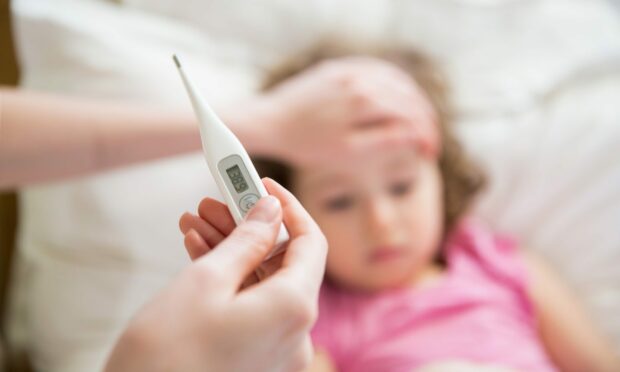With winter viruses and rising Strep A cases across Tayside and Fife, it can be difficult for parents to know when to seek help for sick children.
Paediatric consultant Dr John Morrice, who works at Kirkcaldy’s Victoria Hospital, says he understands this can be a worrying time for parents.
He says: “We know reports about group A strep have caused concern and confusion as to what to look out for – and where and when to go for help when your child is unwell.”
But, one of the difficulties facing parents in winter, he explains, is that many viruses circulating can cause children to be hot and unwell, too.
Here, Dr Morrice shares the signs to look out for – and what to do next.
“Strep A is an illness caused by bacteria in the nose and throat.
“While most Strep A infections are mild and easily treated, occasionally some become more serious.”
How can I tell if it’s a virus or Strep A?
“It’s more likely that your child has a virus, rather than having Strep A, if they have a fever and a cough or a snotty nose,” says Dr Morrice.
“In some cases Strep A can cause scarlet fever or a sore throat, both of which are usually mild conditions but can be easily spread.”
Dr Morrice advises:
-
- If your child has a fever but is otherwise playing, active and alert, then there isn’t much you need to do, regardless of the cause of infection.
However, if your child is under three months of age, or if the fever has been going on longer than five days, you need to seek medical advice. - If your child has a fever and a sore throat and a rash spreading from their chest to their arms and legs, then there is a possibility it could be scarlet fever.
If it is scarlet fever, the rash might feel bumpy, a bit like sandpaper. In that situation you should call your GP who is likely to prescribe antibiotics. They help to reduce the spread of the disease and the severity of the illness. - If your child has a high temperature and a sore throat without a cough or a snotty nose, they should be seen by your GP.
They might do a swab of the throat but there is no quick test for strep like you might have got used to with Covid. They might prescribe antibiotics.
- If your child has a fever but is otherwise playing, active and alert, then there isn’t much you need to do, regardless of the cause of infection.
Should I insist on getting antibiotics?
“A more common viral infection does not mean that your child can’t be unwell,” says Dr Morrice.
“And we all know we can feel very sick with viruses such as flu and Covid.”
However, these won’t get better with antibiotics.
“If your child is just a bit miserable with a fever, but once you’ve given them ibuprofen or paracetamol they improve, and they’re also drinking adequately, then it’s unlikely they have a serious infection,” Dr Morrice adds.
“They should improve with rest and hydration.”
When should I seek urgent medical care?
Dr Morrice says parents should get help urgently in the following cases:
-
-
-
- If your child has a seizure.
- If they’re agitated or drowsy.
- If they have blue lips, very cold hands or feet, are struggling with their breathing or have a rash that doesn’t disappear when pressure is applied.
-
-
NHS Inform has further information, videos and advice here.













Conversation